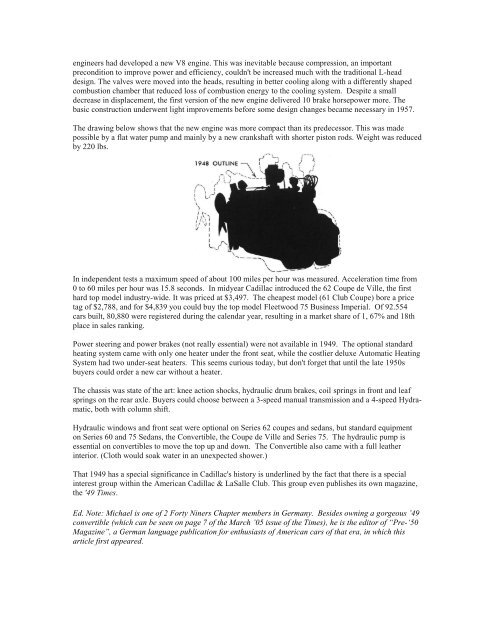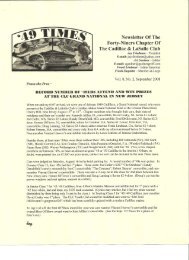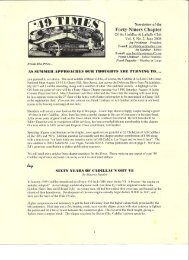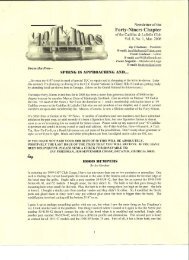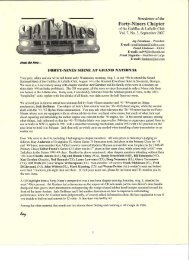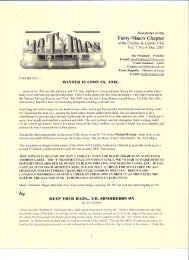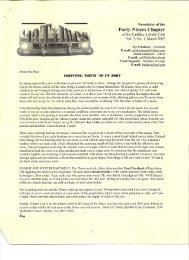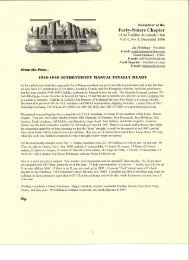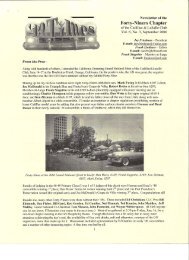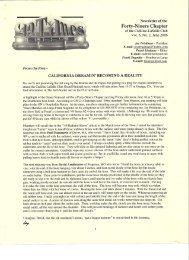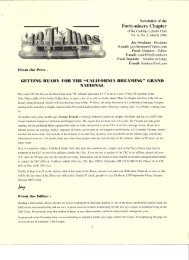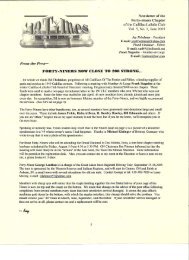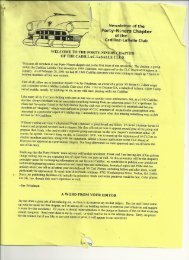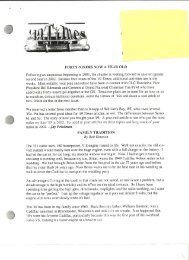Create successful ePaper yourself
Turn your PDF publications into a flip-book with our unique Google optimized e-Paper software.
engineers had developed a new V8 engine. This was inevitable because compression, an important<br />
precondition to improve power and efficiency, couldn't be increased much with the traditional L-head<br />
design. The valves were moved into the heads, resulting in better cooling along with a differently shaped<br />
combustion chamber that reduced loss of combustion energy to the cooling system. Despite a small<br />
decrease in displacement, the first version of the new engine delivered 10 brake horsepower more. The<br />
basic construction underwent light improvements before some design changes became necessary in 1957.<br />
The drawing below shows that the new engine was more compact than its predecessor. This was made<br />
possible by a flat water pump and mainly by a new crankshaft with shorter piston rods. Weight was reduced<br />
by 220 lbs.<br />
In independent tests a maximum speed of about 100 miles per hour was measured. Acceleration time from<br />
0 to 60 miles per hour was 15.8 seconds. In midyear Cadillac introduced the 62 Coupe de Ville, the first<br />
hard top model industry-wide. It was priced at $3,497. The cheapest model (61 Club Coupe) bore a price<br />
tag of $2,788, and for $4,839 you could buy the top model Fleetwood 75 Business Imperial. Of 92.554<br />
cars built, 80,880 were registered during the calendar year, resulting in a market share of 1, 67% and 18th<br />
place in sales ranking.<br />
Power steering and power brakes (not really essential) were not available in 1949. The optional standard<br />
heating system came with only one heater under the front seat, while the costlier deluxe Automatic Heating<br />
System had two under-seat heaters. This seems curious today, but don't forget that until the late 1950s<br />
buyers could order a new car without a heater.<br />
The chassis was state of the art: knee action shocks, hydraulic drum brakes, coil springs in front and leaf<br />
springs on the rear axle. Buyers could choose between a 3-speed manual transmission and a 4-speed Hydramatic,<br />
both with column shift.<br />
Hydraulic windows and front seat were optional on Series 62 coupes and sedans, but standard equipment<br />
on Series 60 and 75 Sedans, the Convertible, the Coupe de Ville and Series 75. The hydraulic pump is<br />
essential on convertibles to move the top up and down. The Convertible also came with a full leather<br />
interior. (Cloth would soak water in an unexpected shower.)<br />
That 1949 has a special significance in Cadillac's history is underlined by the fact that there is a special<br />
interest group within the American Cadillac & LaSalle Club. This group even publishes its own magazine,<br />
the '49 Times.<br />
Ed. Note: Michael is one of 2 Forty Niners Chapter members in Germany. Besides owning a gorgeous ‟49<br />
convertible (which can be seen on page 7 of the <strong>March</strong> ‟05 issue of the Times), he is the editor of “Pre-„50<br />
Magazine”, a German language publication for enthusiasts of American cars of that era, in which this<br />
article first appeared.


